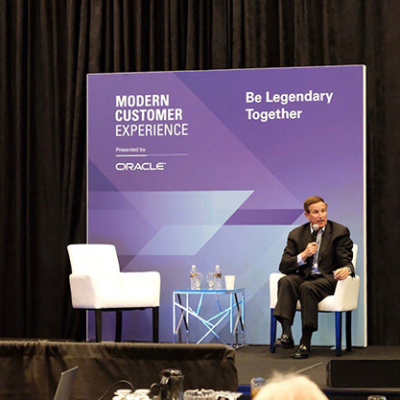
ERP systems work best when they are designed to function as a single integrated solution that serves business needs all the way across an organization — from accounts to warehousing. While many ERP systems support the core functionality needed by most departments, many don’t include components that later turn out to be crucial for a company’s requirements. Unfortunately, the damage is often already done when an organization realizes the missing elements in its solution.

Selecting the right ERP system takes time, careful planning and long-term vision — so imagine choosing a solution only to subsequently find that it can’t fully support key business processes! IFS recently conducted a survey to poll the types of modules most likely to be overlooked in existing ERP systems, and the results were eye-opening.
Reported MIA
The survey focused mainly on manufacturing organizations, which stand to reap a number of business benefits from ERP, and the top three missing elements included:
- Project capabilities – 53 percent of companies reported this module missing
- Preventive maintenance – 48 percent reported this missing
- Document management – 47 percent reported this missing
All three of these functions are vital parts of a fully integrated ERP solution. They provide organizations with the depth of visibility needed to make the best strategy decisions and increase ROI.
Project Capabilities – From Cradle to Grave
While the project capability needs of different manufacturing businesses can vary widely, almost all companies need to manage individual projects to some extent. Yet a staggering 53 percent of respondents reported this module as missing from their ERP functionality. For example, a company may manufacture a complex valve assembly that goes into an oil pipeline. Both the valve and pipeline are unique. The dimensions, shape, connectors and specifications are going to be unique to this one project. It’s going to have to be engineered and manufactured to a very specific set of criteria.
The project runs from the initial design phase, all the way through to tooling, customer specification and delivery. The room for inefficiency is large, given the amount of tasking, possible customer changes and processes involved.
ERP systems with true project capabilities should act as an ‘umbrella’ that gathers together all the details of these activities into one global, top-down view that allows you to see a breakdown of elements: time, cost, materials, labor and, of course, contract compliance. Forecasting allows you to determine the possible implications on other on-going projects. For example, assigning extra labor to this project may have a detrimental effect on other projects.
Comprehensive ERP solutions give all stakeholders visibility into the cause and effect of project changes. They allow decision-makers to work from a ‘single point of truth’, enabling informed decisions to be made around resource balances and prioritization between projects — streamlining efficiency.
Project-based organizations without full project capability in an ERP solution, will never realize the full value it can provide. It’s also important to think about the depth of the project capabilities in any given ERP system. Some ERP systems offer project management functionality on a very limited basis.
Those may give the illusion of having some project control, but if project management functionality is not in the DNA of the application, the project-centric visibility needed for comprehensive ROI cannot be achieved.
Preventative Maintenance – Don’t Get Surprised by Unplanned Downtime
It’s obvious that machinery needs to be serviced and maintained — otherwise it breaks. If machinery fails, production grinds to a halt and loses the manufacturer a large amount of time and money.
With preventative maintenance the clue is in the name — it can effectively ‘prevent’ these costly breakdowns. Yet not all ERP systems actually provide routine maintenance functionality — 48 percent of organizations don’t have access to this according to the IFS survey.
This information is often tracked in spreadsheets, with manually entered data or in a separate standalone package. This adds an extra layer of complexity into maintenance tracking and tasking, often resulting in complicated interfaces with data that doesn’t reflect how the machinery is actually working.
Here’s a simple example: A machine has to be serviced every three months or 500 hours. You might know when three months is up and service it at that point, but what if, due to the nature of the machine’s recent workload, it had only been used half as much as previously? That means servicing might not be necessary for another six weeks, but that information isn’t connected to a manual tracking system, so it’s serviced anyway, wasting a large amount of money.
Another example of how a standalone or manual system may be doing you a disservice: A manager makes a decision to take a particular machine down for service. If that information isn’t visible to the manufacturing solution, then it expects to have eight hours of capacity run, and will fully schedule the machine. Now the schedule is inaccurate and production is behind.
A fully integrated preventive maintenance solution provides visibility into the needs of all sides of the business without any double entry of data or complicated interfaces. It knows what the maintenance schedule is, but it also knows how much each asset is actually being used. Combining those two pieces of information can help you make decisions about whether it’s OK to safely defer maintenance, as well as optimize scheduling of work orders.
Document Management – On the Same Page
At its core, document management is the ability to collect and control files. Documents typically need controls around who is able to view, edit and create them. Control also usually includes an approval process for a company’s documents that range from fairly simple to very complex. This is why it’s surprising to see this functionality being reported missing by 47 percent of respondents.
Most ERP packages have the ability to collect documents, but can be more limited when it comes to the controls for authoring, approving, distributing and controlling access to documents.
While it’s important to consider document controls, it’s also important to look at how your processes handle where a document is used. For example, say you have an engineering drawing of a part, but if that drawing isn’t housed in your ERP solution, then you have to leave the ERP system and go in to the engineering system or standalone document management system and get it.
There’s high scope for human error here, and therefore the high likelihood that the result will be an expensive scrap pile.
A document management solution that’s integrated with ERP not only provides a vaulting and control mechanism, but also has the possibility to logically connect a revision of a document to something else in the database — like a bill of material or a part. Documents can be accessed without having to set up a lot of complicated integrations, rules, synchronizations or multiple copies. They’re just right there, when strategists and staff need them.
Ready for All Duties
ERP systems can do some amazing things, and when companies first start the process of evaluating new solutions, it’s easy to get wowed by new functionalities that you may not have been aware even existed.
Project capabilities, preventive maintenance and document management are essential functions that should be included in any ERP system to support an organization in the long-term, not just here and now.
Don’t lose sight of the modules that have the potential to make a true difference in business efficiency, and to the bottom line. It’s important to keep in mind not only the tasks that your company is engaged in right now, but also the types of projects your team members may be handling in the future as a result of growth or changing business dynamics.
With a comprehensive ERP solution, missing elements become a thing of the past.
Author: Rick Veague is Chief Technology Officer, North America at IFS.




















